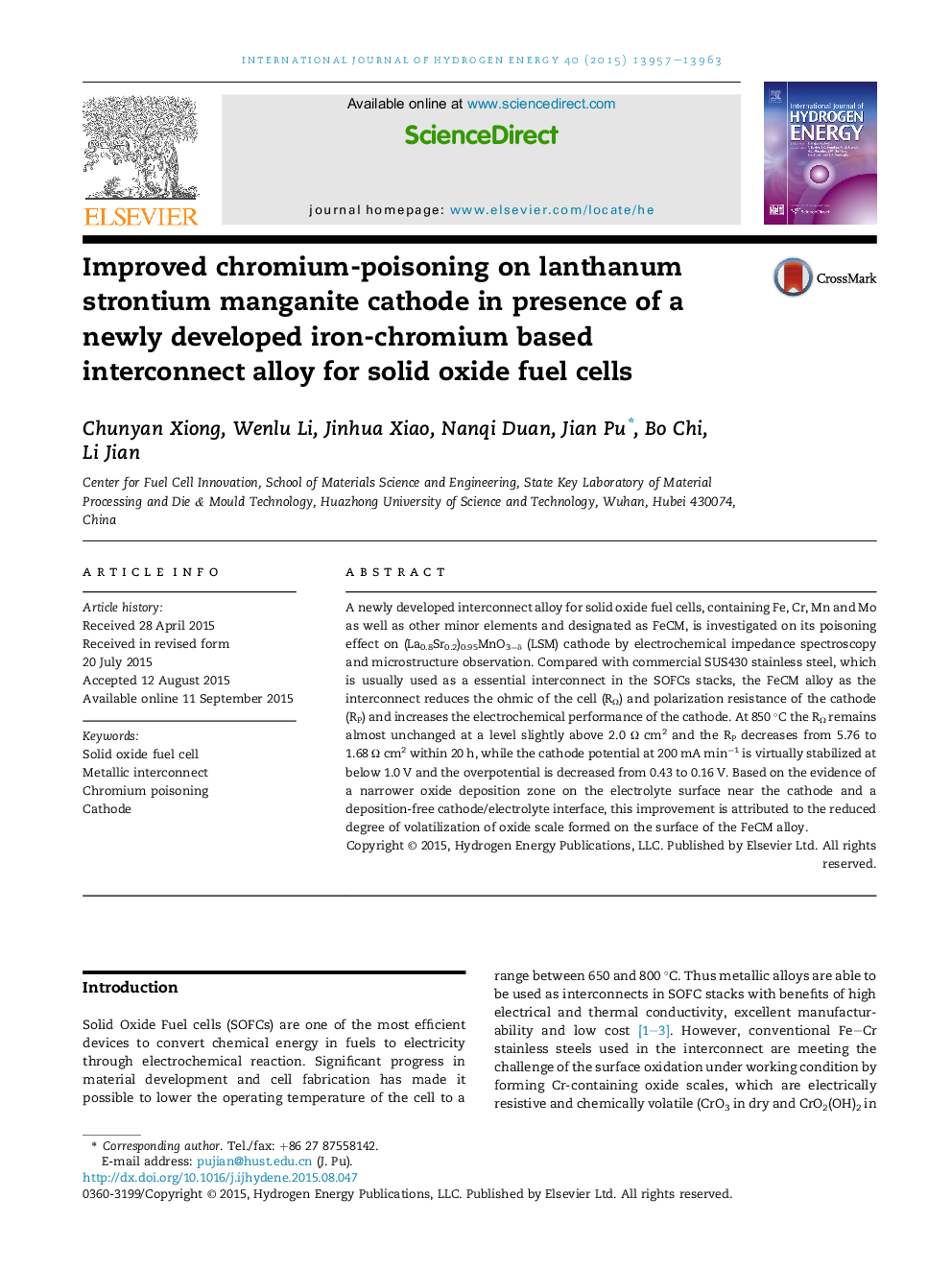| Article ID | Journal | Published Year | Pages | File Type |
|---|---|---|---|---|
| 1270454 | International Journal of Hydrogen Energy | 2015 | 7 Pages |
•A novel Fe–Cr based interconnect alloy containing molybdenum exhibited less Cr poisoning effect on LSM cathode of SOFC.•The alloy containing molybdenum revealed narrow oxide deposition zone due to Cr volatilization reduced.•The mechanism of Cr poisoning LSM cathode has been demonstrated on two kinds of ferritic stainless steel as interconnect.
A newly developed interconnect alloy for solid oxide fuel cells, containing Fe, Cr, Mn and Mo as well as other minor elements and designated as FeCM, is investigated on its poisoning effect on (La0.8Sr0.2)0.95MnO3−δ (LSM) cathode by electrochemical impedance spectroscopy and microstructure observation. Compared with commercial SUS430 stainless steel, which is usually used as a essential interconnect in the SOFCs stacks, the FeCM alloy as the interconnect reduces the ohmic of the cell (RΩ) and polarization resistance of the cathode (RP) and increases the electrochemical performance of the cathode. At 850 °C the RΩ remains almost unchanged at a level slightly above 2.0 Ω cm2 and the RP decreases from 5.76 to 1.68 Ω cm2 within 20 h, while the cathode potential at 200 mA min−1 is virtually stabilized at below 1.0 V and the overpotential is decreased from 0.43 to 0.16 V. Based on the evidence of a narrower oxide deposition zone on the electrolyte surface near the cathode and a deposition-free cathode/electrolyte interface, this improvement is attributed to the reduced degree of volatilization of oxide scale formed on the surface of the FeCM alloy.
